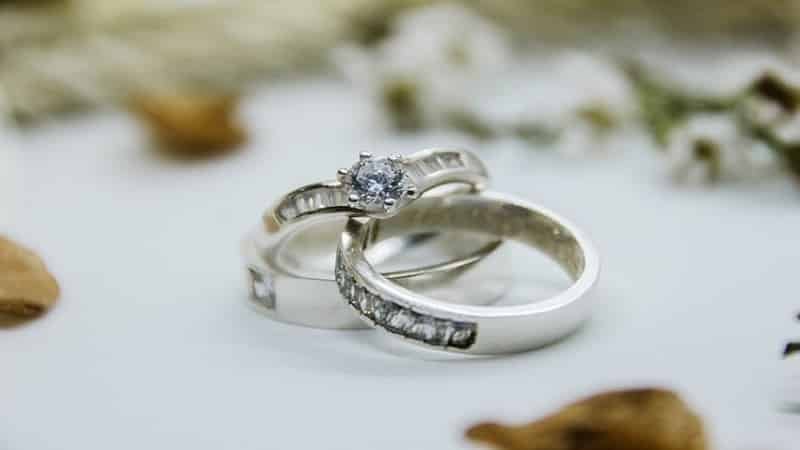How is Platinum Formed?

Table of Contents
Platinum often referred to as “White Gold”, can be found in the earth’s crust originating in igneous rocks. Platinum components can be found in rocks like chromite and olivine. Platinum is commonly found as grains and nuggets and finding them in the form of crystals is extremely rare. Before platinum and other hard rocks became readily available, the majority of the supply came from Russia from its Ural Mountains. Due to the gravity of the metal, these particles would deposit on the beds of the stream.
In this article, we will be looking into how platinum is formed, along with its uses and interesting facts.
What is Platinum?
From the list of precious metals, platinum is considered the rarest and most expensive type of metal there is. Natural platinum is rare to find as it almost always contains small amounts of other metals such as gold, iron, nickel, and copper. The name comes from “Platina” given by the Spaniards which means “little silver”. This was first discovered in Columbia and discarded as an impurity from the silver deposits they were excavating.
Platinum is dense, stable, and a rare metal that is most commonly used in jewelry as it resembles the appearance of silver. Platinum is rarer than gold and its annual supply is around 250 metric tons. Most of the world’s platinum deposits are found in Russia and South Africa. The metal does not erode or tarnish away, and it is a malleable substance which makes shaping it in different ways very convenient. The unreactive properties of platinum prevent the metal from oxidizing and it does not react to common acids like other metals.
Platinum Mining
The pure form of platinum is known as Native Platinum and it can be found in gravel beds called placer deposits. When old rocks are eroded and washed into streams and rivers, these sand and gravel beds are deposited. Mining platinum from placer deposits is a simple process – the platinum sand and gravel deposits are picked up from mining sites and it is washed and cleaned till platinum grains and nuggets are left behind.
It is also mined in the form of an ore – sperrylite and cooperite are platinum ores and the mining process is more economically feasible than mining riverbeds. Sometimes platinum can be found as a by-product for other metal ores when copper or nickel is refined.
Platinum deposits are in limited quantity across the globe. For every 10 gold mines, we have a single platinum mine. To understand the rarity of platinum, we can say that it would take a room of mere 25 square feet to fill up all the platinum that is ever mined.
Uses of Platinum
The atomic structure of platinum allows it to bond with other elements and it is considered a transition metal similar to gold, silver, titanium, and copper. Here is a list of the various uses of platinum in today’s world.
Helps Treat Cancer
If we use platinum in a certain chemical form, it can slow down or stop the divisions of living cells. Approximately 50% of patients who go through cancer therapy use drugs containing platinum. Drugs like cisplatin are used to treat tumors and cancer in animals as well. The non-toxic and stable properties of platinum make it biologically compatible and do not harm any body tissues. Recent research regarding platinum suggests that it prevents the growth of cancerous cells in humans.
Purifies Automobile Emissions
Almost half of the total mined platinum is used for catalytic convertors – a part of the automobile vehicle that converts toxic gasses into less-toxic emissions. Platinum metals have the ability to resist high temperatures that occur during oxidation reactions and it reduces the toxicity of these emissions.
Apart from this, platinum wires are used to initiate airbags in vehicles. The initiator sensor uses a sleek and fine platinum wire that is coated with an explosive material which signals the release of the airbag upon collision.
Better Personal Hygiene
A range of personal care products such as lipsticks, shampoos, and contact lenses use a platinum-cured silicone mixture. Platinum is also used for the purpose of wound healing by sticking to the dry skin and not attaching itself to the damaged wet wound. The platinum-cured silicones assist the healing process as it allows air and moisture to penetrate and dry up the wound.
Platinum as a Source of Power
Platinum-based fuel cells are cleaner and more reliable than their alternatives like diesel-fueled generators. The fuel cells are a cost-effective way of providing energy for electricity and it is making leaps for the rural communities of South Africa. This is a competitive alternative to grid electrification and it improves the accessibility of electricity to schools and homes. It also helps in facilitating farming through an electric irrigation system and it also helps generate income.
Platinum as Fine Jewelry
The use of platinum as jewelry was first popularized in the 1900s when metalsmiths used this material to create elaborate pieces of ornaments. While silver was primarily the precious metal for jewelry creation, in 1890 Cartier introduced an all platinum collection that came with a shimmering white surface. This was achieved using iridium platinum that had the right kind of hardness and malleability to be converted into lacy scrolls, bows, hearts, and flowers.
Our Final Thoughts
Platinum is the rarest and most expensive form of precious metal, even after gold. Historically found in the regions of Columbia, today the biggest platinum mines are located in Russia and South Africa. Apart from being a popular metal used for jewelry production, platinum has several other uses such as in the pharmaceutical industry for the creation of anti-cancerous drugs, it is used for anti-pollution devices such as automobiles, it is used for personal hygiene, and it is becoming an important source of power that has a less damaging impact on the environment compared to traditional electricity grids.